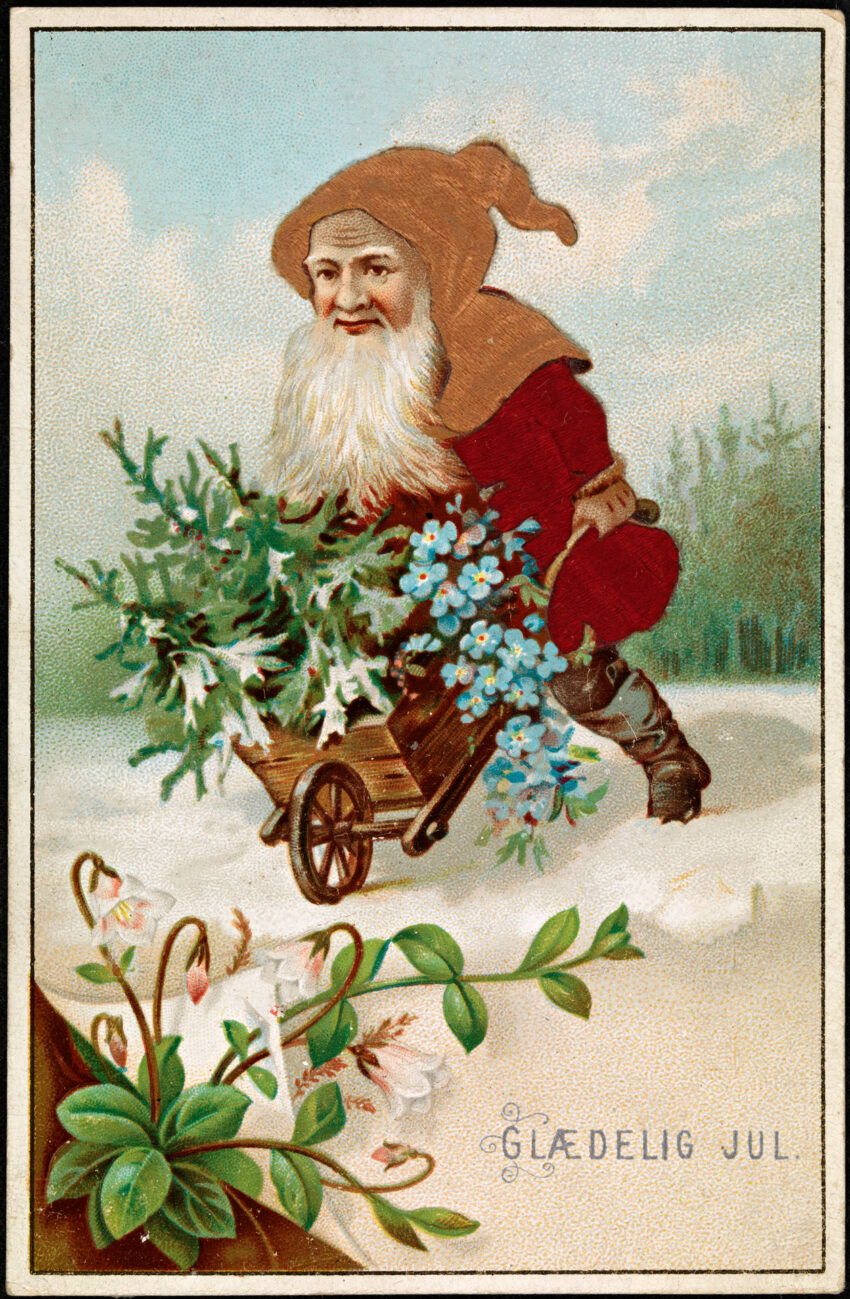A friend of mine is walking (virtually) from the Freeport area to Disneyland in California. She posts her updates regularly and includes fun facts about the towns she is virtually walking through. The other day, while she was “in” Iowa, she was walking through an area that had strong Danish roots. Part of the Danish culture is folklore about the Nisse. So, just for fun, I thought I’d check them out.
According to Myth and Folklore Wiki, the Nisse (also known as Tomte) are mythological creatures from Scandinavian folklore who secretly live in a house and act as its guardians. If you treat them well, they protect children and farm animals from evil and misfortune. They can also help with chores and farm work.
Okay, so I need a small army of Nisse.
Or do I?
One Reddit user, referring back to someone calling the Nisse friendly, said, “”Friendly” is a nice way to call a super aggressive, easily enraged creature with magical powers that wouldn’t think twice about killing your only milk cow due to a lack of butter in his yearly porridge.”
Although I like butter too!
Another Reddit user referred to Nisse as Santa’s elves. This isn’t surprising when you discover that they are often associated with the winter solstice and the Christmas season.
The Nisse actually look like Santa’s elves. Wikipedia says, “They are generally described as being short, having a long white beard, and wearing a conical or knit cap in gray, red or some other bright color. They often have an appearance somewhat similar to that of a garden gnome.”
I don’t know if being compared to a garden gnome is very complimentary. And, as I mentioned a little earlier, you don’t want to make the Nisse upset with you. Perhaps to make sure they didn’t ruffle any Nisse feathers, Wikipedia added to their description of these little people, “The Nisse/Tomte was often imagined as a small, elderly man (size varies from a few inches to about half the height of an adult man), often with a full beard; dressed in the traditional farmer garb, consisting of a pull-over woolen tunic belted at the waist and knee breeches with stockings. However, there are also folktales where he is believed to be a shapeshifter able to take shape far larger than an adult man and other tales where the Nisse is believed to have a single Cyclopean eye.”
A one-eyed shapeshifter is not something that I really want wandering around my barn.
“In modern Denmark, Nisser are often seen as beardless, wearing grey and red woolens with a red cap. Since Nisser are thought to be skilled in illusions and sometimes able to make themselves invisible, one was unlikely to get more than brief glimpses of him no matter what he looked like. Norwegian folklore states that he has four fingers, and sometimes with pointed ears and eyes reflecting light in the dark, like those of a cat.”
So, now they are one-eyed, four-fingered, reflecting-eyed shapeshifters. I really don’t want them wandering around my barn.
The Swedish Press shared a story about the Nisse or Tomte character. “Dwelling around the farm but careful to always remain out of sight, the Tomte is known to be a dutiful, hard worker. He cares for the animals, children, and property at the homestead, asking very little in return but respect and the occasional bowl of porridge. At the inkling of disrespect – which can come in the form of foul language or a sudden change in an age-old tradition – he will not hesitate to stir up trouble. Tomtes are known to be mischievous and fiery-tempered, acting out through something as benign as mixing up the animals in the barn to much more extreme shows of chaos and violence.
One classic example of his fickle character is the story of Tomte and his Christmas porridge. For his loyal work throughout the year, a Tomte is said to require a bowl of porridge with a generous dollop of butter on top when the holidays come around. Legend has it that one year, a servant girl jokingly hid the butter at the bottom of the bowl, and the Tomte was so infuriated by the slight that he slaughtered the family’s best cow. Upon finishing his meal and realizing that there was butter at the bottom of the bowl, the Tomte felt guilty – so guilty that he stole a neighbor’s cow as a replacement to atone for his mistake.”
Well, stealing the neighbor’s cow when you slaughtered the family’s cow by accident makes it all better, doesn’t it?
Finally, here’s a poem that was first published in 1881 in the New Illustrated Magazine.
Midwinter’s nightly frost is hard —
Brightly the stars are beaming;
Fast asleep is the lonely yard,
All, at midnight, are dreaming.
Clear is the moon, and the snow-drifts shine,
Glistening white, on fir and pine,
Covers on rooflets making.
None but the Tomte is waking.
How serene, and yet, really, really creepy. Just remember, none, but the Tomte is waking…
Happy Friday!!!
Photo credit: By Nasjonalbiblioteket from Norway – Glædelig Jul, 1885 Uploaded by Anne-Sophie Ofrim, CC BY 2.0, https://commons.wikimedia.org/w/index.php?curid=19044871
